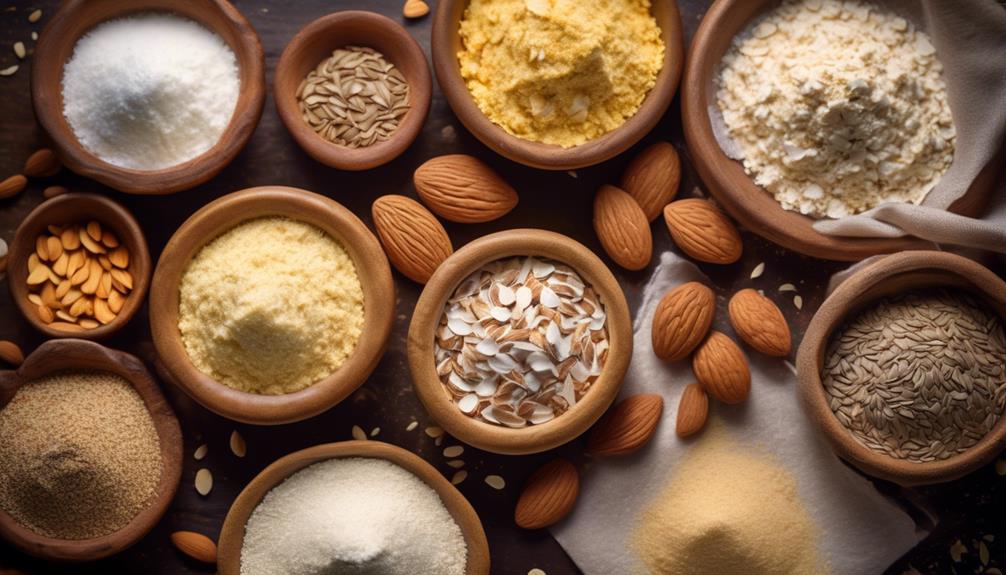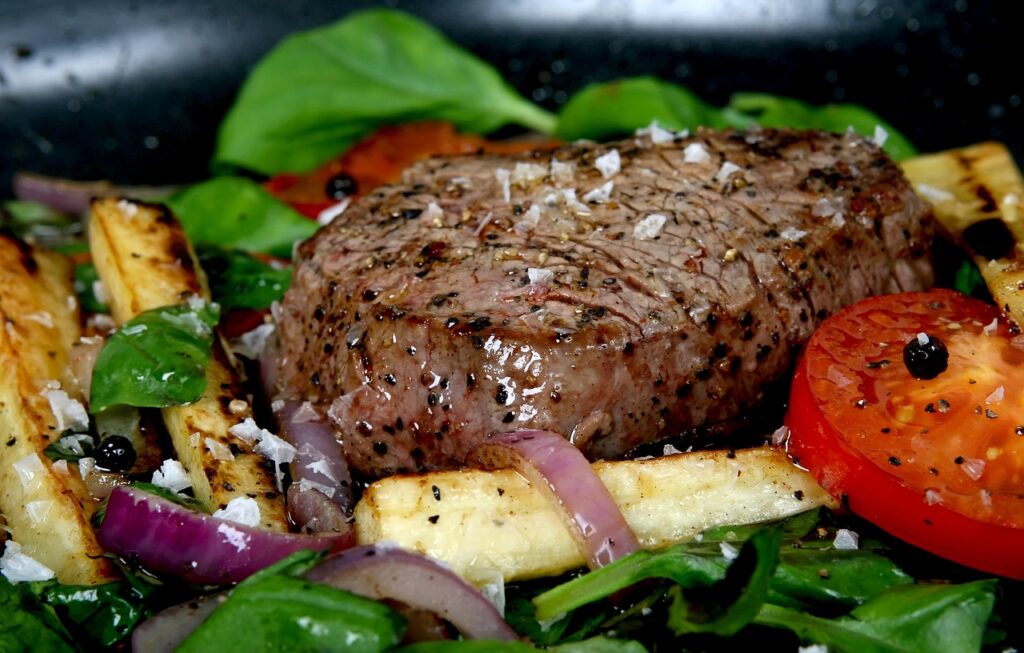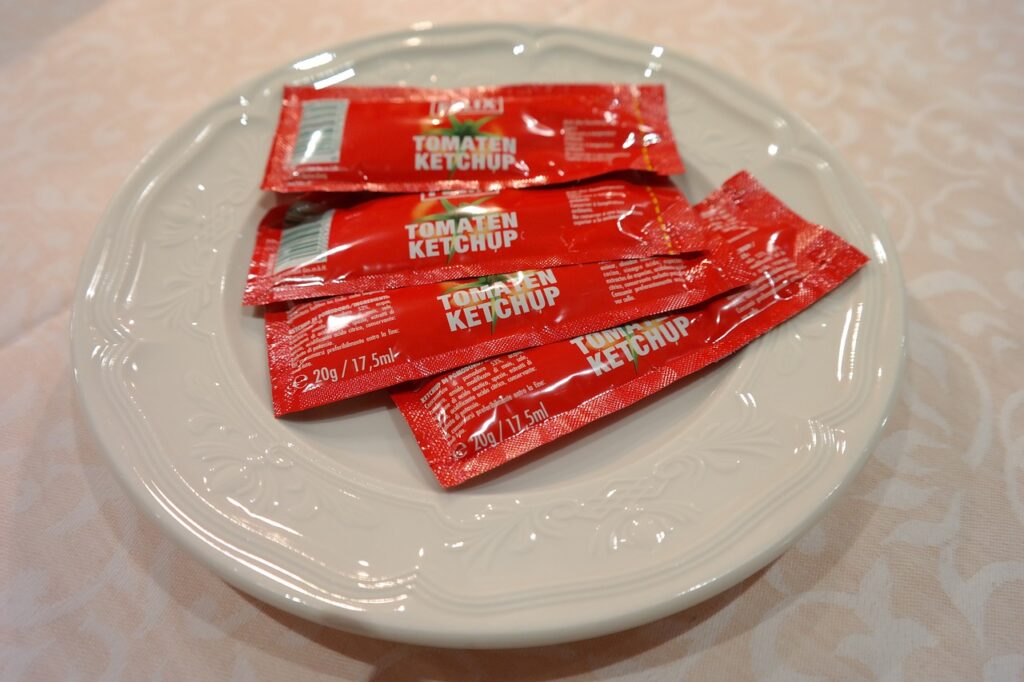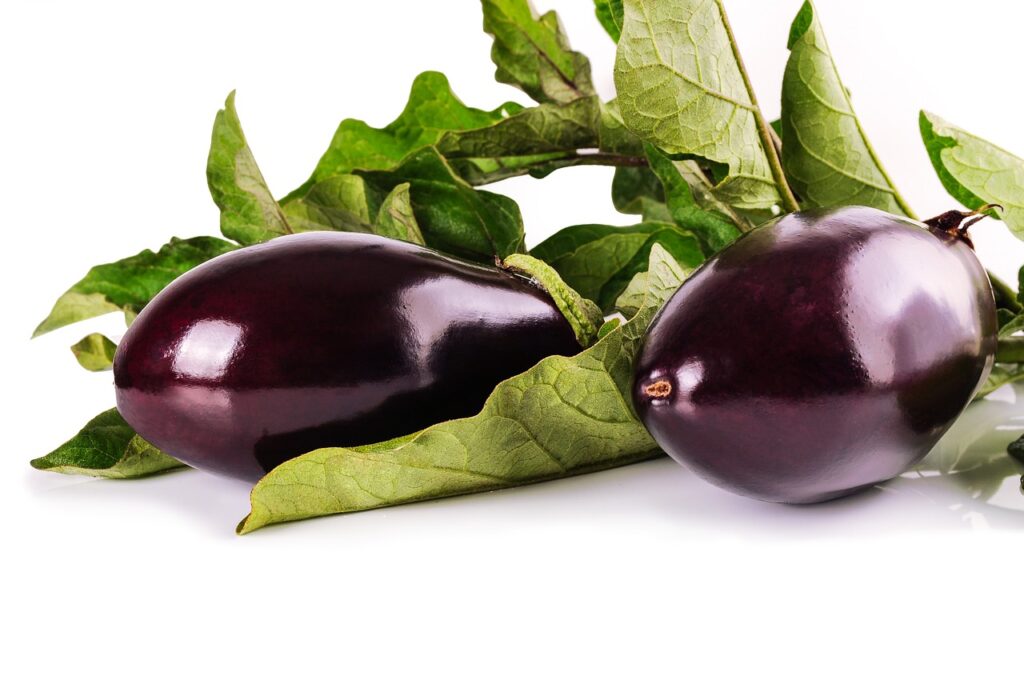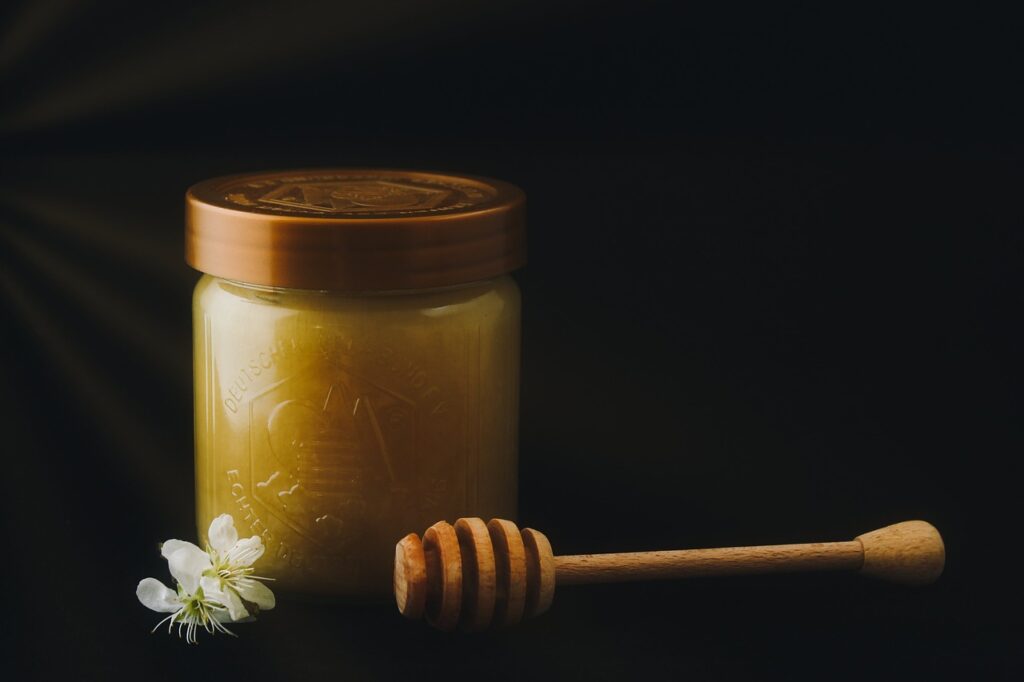Have you ever felt like a detective on a mission to uncover the perfect gluten-free low-carb flour? Well, get ready to put on your detective hat and explore the world of gluten-free flours that are not only low in carbs but also pack a punch in terms of taste and texture.
From the nutty goodness of almond flour to the light and airy nature of coconut flour, there is a wide range of options to choose from. But which ones stand out from the rest?
In this discussion, we will delve into the best gluten-free low-carb flours that will make your taste buds dance and your carb count stay in check. Are you ready to discover these flour powerhouses?
Almond Flour
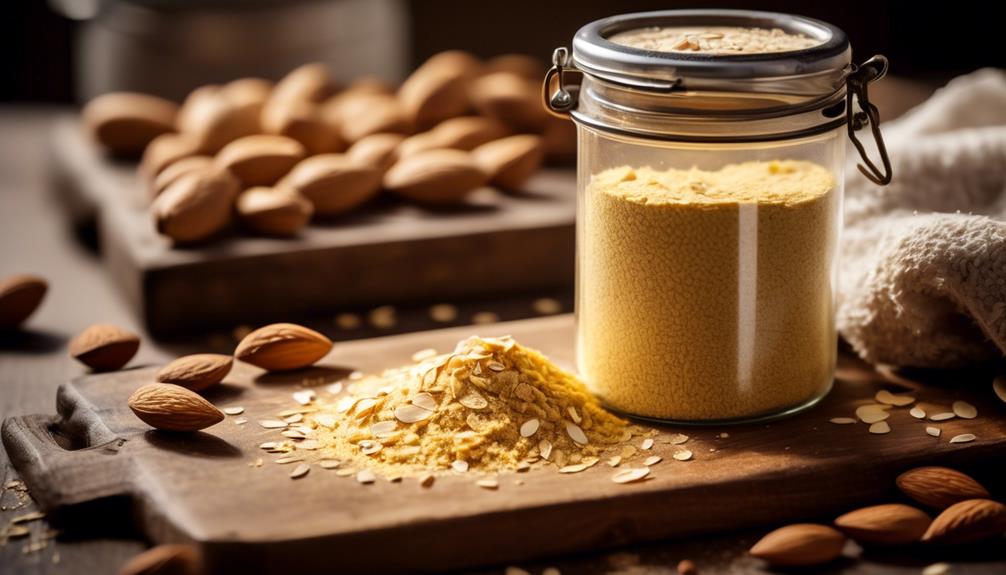
Have you ever wondered why almond flour has become such a popular choice among those following a gluten-free and low-carb diet? Well, let's delve into the benefits of almond flour and find out why it has gained such popularity.
Almond flour is made from ground almonds, and it has numerous advantages. Firstly, almond flour is rich in nutrients, including vitamin E, magnesium, and healthy fats. These nutrients contribute to heart health, improved brain function, and reduced inflammation. Additionally, almond flour is low in carbohydrates and high in fiber, making it an excellent choice for those on a low-carb diet.
Moreover, almond flour is incredibly versatile and can be used in a variety of recipes. From pancakes and bread to cookies, muffins, and even brownies, almond flour can be substituted for regular flour in many baked goods. It provides a nutty flavor and a moist texture, enhancing the taste of your favorite treats.
While almond flour is a popular choice, it's essential to note that there are alternatives available, such as coconut flour. Almond flour and coconut flour have different textures and absorbency levels, so they can't be used interchangeably. However, both flours offer unique nutritional benefits and can be used in various recipes.
Coconut Flour
Now let's explore the benefits of coconut flour and understand why it has become another popular choice for those following a gluten-free and low-carb diet.
Coconut flour is a versatile ingredient that can be used in various baking recipes. It's made from the flesh of coconuts, which is dried and ground into a fine powder.
One of the key benefits of coconut flour is its low carbohydrate content. It contains significantly fewer carbs compared to other flours like wheat or rice flour. This makes it an excellent option for individuals who are watching their carb intake, including those on a low-carb or ketogenic diet.
Additionally, coconut flour is gluten-free, making it a suitable alternative for individuals with celiac disease or gluten sensitivity. It's also rich in fiber, which can help support healthy digestion and keep you feeling fuller for longer.
Another advantage of coconut flour is its unique flavor. It adds a subtle hint of coconut to baked goods, giving them a delicious tropical twist. However, it's important to note that coconut flour absorbs more liquid than other flours, so adjustments may need to be made in recipes to ensure the right consistency.
Flaxseed Meal

Flaxseed meal is a nutritious and popular ingredient that offers a range of health benefits for those following a gluten-free and low-carb diet. Here are some of the nutritional benefits and baking tips for using flaxseed meal:
- High in omega-3 fatty acids: Flaxseed meal is rich in alpha-linolenic acid (ALA), an essential omega-3 fatty acid that's beneficial for heart health and inflammation reduction.
- Excellent source of fiber: Flaxseed meal contains both soluble and insoluble fiber, which aids in digestion, promotes satiety, and helps regulate blood sugar levels.
- Low in carbs: With only 2 grams of net carbs per serving, flaxseed meal is a great choice for those on a low-carb diet.
- Gluten-free alternative: Flaxseed meal is naturally gluten-free, making it suitable for individuals with celiac disease or gluten intolerance.
- Egg substitute in baking: Flaxseed meal can be used as an egg substitute by mixing it with water. This makes it a versatile ingredient for vegan or egg-free baking.
When using flaxseed meal in baking, remember to store it in the refrigerator to maintain its freshness and prevent spoilage. Additionally, you may need to adjust the liquid content in your recipes, as flaxseed meal absorbs moisture. It's recommended to use a ratio of 1:3 (flaxseed meal to liquid) when substituting it for flour in recipes.
Experiment with adding flaxseed meal to your favorite baked goods, such as bread, muffins, and cookies, to enjoy its nutritional benefits while maintaining a gluten-free and low-carb lifestyle.
Hazelnut Flour
When it comes to gluten-free and low-carb baking, hazelnut flour is a great option to consider. Not only does it provide a delicious nutty flavor, but it also comes with several nutritional benefits.
Hazelnut flour is rich in healthy fats, fiber, and essential vitamins and minerals, making it a nutritious choice for those following a gluten-free or low-carb diet.
Additionally, it can be used in a variety of baked goods, such as cookies, cakes, and bread, providing a tasty alternative to traditional flours.
Nutritional Benefits of Hazelnut Flour
Hazelnut flour offers a variety of nutritional benefits that make it a valuable addition to a gluten-free low-carb diet. Here are five reasons why you should consider incorporating hazelnut flour into your recipes:
- High in healthy fats: Hazelnut flour contains monounsaturated fats, which are heart-healthy and help to reduce bad cholesterol levels.
- Rich in vitamins and minerals: Hazelnut flour is a good source of vitamin E, magnesium, iron, and calcium, which are essential for various bodily functions.
- Low in carbohydrates: Compared to other low-carb flours like almond and coconut flour, hazelnut flour contains fewer carbs, making it a suitable option for those watching their carbohydrate intake.
- High in fiber: Hazelnut flour is packed with dietary fiber, which aids in digestion, promotes satiety, and helps to regulate blood sugar levels.
- Nutty flavor and texture: Hazelnut flour adds a delicious nutty flavor and a slightly crunchy texture to baked goods, enhancing their taste and providing a pleasant mouthfeel.
Incorporating hazelnut flour into your gluten-free low-carb recipes can't only provide a nutritious boost but also contribute to a more enjoyable culinary experience.
Baking Tips Using Hazelnut Flour
To enhance the taste and texture of your baked goods, consider incorporating hazelnut flour into your recipes for a delightful nutty flavor and a slightly crunchy texture. Hazelnut flour can be used in a variety of recipes, including cakes, cookies, and breads.
When using hazelnut flour in your baking, it's important to keep a few tips in mind. First, hazelnut flour has a higher fat content compared to other flours, so it's best to reduce the amount of fat in your recipe to avoid a greasy texture. Additionally, hazelnut flour is denser than all-purpose flour, so you may need to increase the amount of leavening agents, such as baking powder or baking soda, to ensure proper rise.
If you don't have hazelnut flour on hand, you can also try substituting almond flour or coconut flour in your recipes for similar results. Experiment with hazelnut flour in your favorite recipes and enjoy the unique flavor and texture it brings to your baked goods.
Sunflower Seed Flour
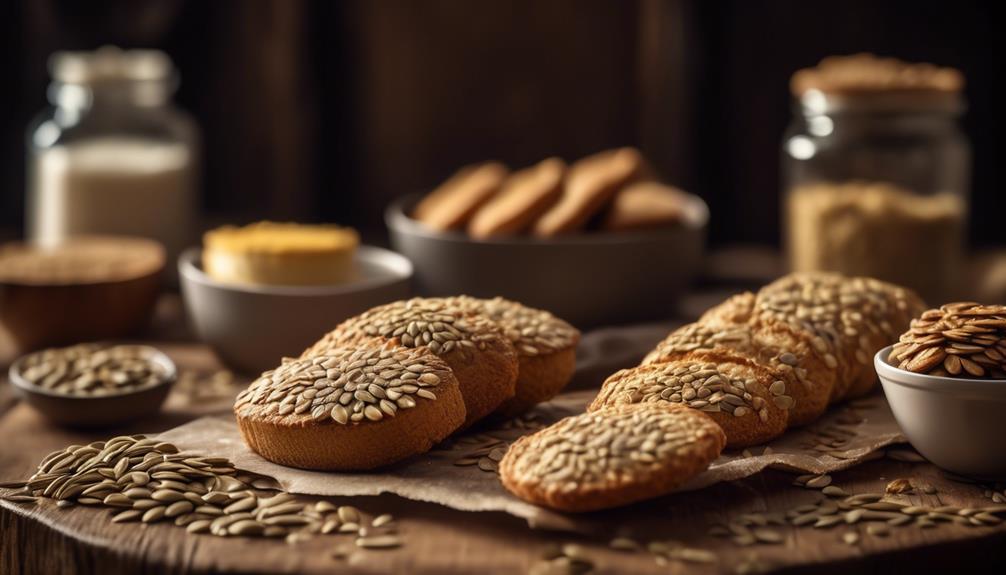
Sunflower seed flour is a versatile and nutritious option for those following a gluten-free low-carb diet. Here are some key points to consider:
- Nutritional Benefits: Sunflower seed flour is packed with essential nutrients. It's a good source of protein, fiber, healthy fats, and various vitamins and minerals. It also contains phytochemicals like phytosterols, which have been shown to have anti-inflammatory properties.
- Baking Tips: When using sunflower seed flour in baking, it's important to keep a few things in mind. First, because it's low in carbohydrates, it may not provide the same structure and texture as wheat flour. To compensate for this, you can combine it with other gluten-free flours or use binding agents like xanthan gum or psyllium husk. Additionally, sunflower seed flour has a slight nutty flavor, which can enhance the taste of your baked goods.
- Recipe Adaptations: Sunflower seed flour can be a great substitute for almond flour in recipes, especially for those with nut allergies. It can be used to make bread, cakes, cookies, pancakes, and more. Experiment with different ratios and combinations to find the perfect texture and taste.
- Storage Tips: To keep your sunflower seed flour fresh, store it in an airtight container in a cool, dark place. It's also advisable to refrigerate or freeze it for longer shelf life.
- Label Reading: When purchasing sunflower seed flour, always check the label for any potential cross-contamination with gluten-containing grains. Look for certified gluten-free options to ensure the highest quality and safety.
Incorporating sunflower seed flour into your gluten-free low-carb diet can provide you with a nutritious and delicious alternative to traditional flours. Experiment with different recipes and enjoy the benefits it brings to your baking endeavors.
Cassava Flour
If you're looking for another gluten-free low-carb flour option to add to your baking repertoire, consider exploring the versatility of cassava flour. Cassava flour is derived from the root of the cassava plant, which is native to South America. It has gained popularity in recent years as a gluten-free alternative to traditional flours.
One of the nutritional benefits of cassava flour is its low carbohydrate content. It's particularly suitable for individuals following a low-carb or ketogenic diet. Cassava flour is also rich in fiber, which can aid in digestion and promote a feeling of fullness.
When using cassava flour in your baking, there are a few tips to keep in mind. First, it's important to note that cassava flour has a different texture than wheat flour, so you may need to adjust your recipes accordingly. It's recommended to start by substituting a portion of the wheat flour with cassava flour and gradually increase the amount until you achieve the desired consistency.
Additionally, cassava flour has a slightly sweet taste, so you may need to reduce the amount of sweetener in your recipes. It's also advisable to add more liquid to your batter or dough as cassava flour tends to absorb more moisture.
Chickpea Flour
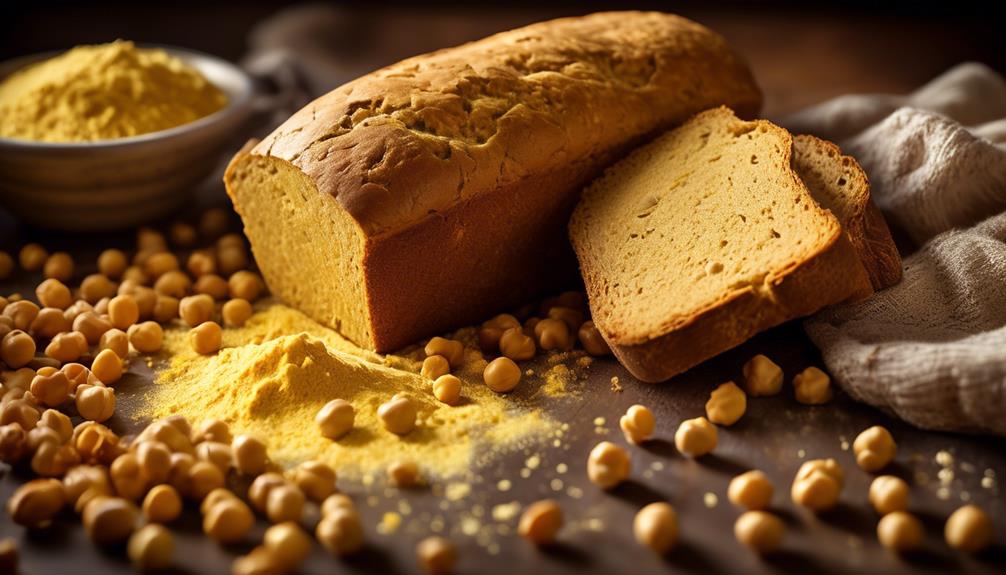
Chickpea flour, also known as gram flour, is a versatile gluten-free low-carb option that can be a great addition to your pantry. This flour is made from ground chickpeas and has a slightly nutty flavor. It can be used in a variety of recipes, making it a fantastic alternative for those who follow a gluten-free or low-carb diet.
Here are some reasons why you should consider adding chickpea flour to your cooking repertoire:
- Rich in Protein: Chickpea flour is packed with protein, making it an excellent choice for those looking to increase their protein intake. It contains about 22 grams of protein per 100 grams, which is higher than other gluten-free flours.
- High in Fiber: With approximately 10 grams of fiber per 100 grams, chickpea flour can help promote a healthy digestive system and keep you feeling full for longer.
- Good Source of Vitamins and Minerals: Chickpea flour is rich in essential vitamins and minerals, including folate, iron, magnesium, and zinc. These nutrients play a vital role in supporting overall health and well-being.
- Versatile in Recipes: Chickpea flour can be used to make a wide range of dishes, from savory items like pancakes, falafel, and flatbreads to sweet treats like cookies and cakes. It offers a unique taste and texture to your favorite recipes.
- Gluten-Free Alternative: Chickpea flour is naturally gluten-free, making it an excellent option for those with gluten sensitivities or celiac disease. It can be easily substituted for wheat flour in many recipes.
Incorporating chickpea flour into your diet can provide numerous health benefits and open up a world of delicious possibilities. From savory to sweet, there are endless chickpea flour recipes to explore and enjoy.
Pumpkin Seed Flour
Adding to your repertoire of gluten-free low-carb flours, pumpkin seed flour is a nutritious option that can elevate your cooking and baking endeavors. Not only is pumpkin seed flour gluten-free and low in carbohydrates, but it also offers an impressive nutritional profile. High in protein, fiber, and healthy fats, pumpkin seed flour provides essential nutrients such as magnesium, zinc, and iron. These nutrients are vital for maintaining a healthy immune system, supporting bone health, and promoting optimal digestion.
When it comes to incorporating pumpkin seed flour into your baking recipes, the possibilities are endless. You can use it as a substitute for traditional flours in recipes such as pancakes, muffins, and bread. The nutty flavor of pumpkin seed flour adds a unique twist to your baked goods, enhancing their taste and texture. Additionally, the high protein content in pumpkin seed flour helps create a denser and more satisfying end product.
To get started with baking using pumpkin seed flour, you can try recipes like pumpkin seed flour chocolate chip cookies, pumpkin seed flour banana bread, or pumpkin seed flour pizza crust. These recipes not only provide a delicious way to enjoy the benefits of pumpkin seed flour but also allow you to explore its versatility in different types of dishes.
Incorporating pumpkin seed flour into your gluten-free low-carb baking is a smart and nutritious choice. Its impressive nutritional value and unique flavor make it an excellent option for those looking to diversify their flour choices and add a healthy twist to their favorite recipes.
Tiger Nut Flour
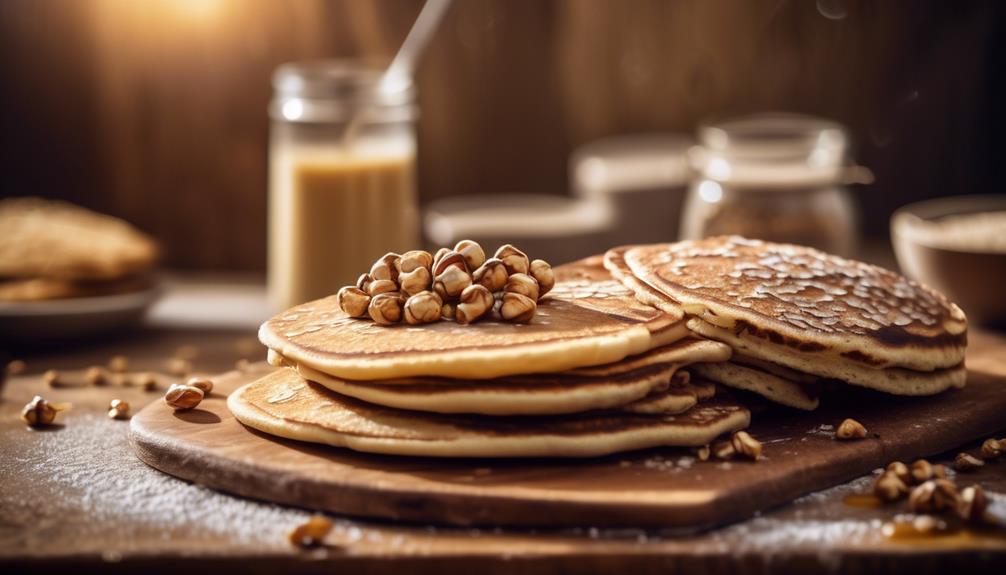
Tiger nut flour offers a nutritious and gluten-free alternative for your low-carb baking needs. Made from the tubers of the tiger nut plant, this flour is packed with health benefits.
Here are some reasons why you should consider incorporating tiger nut flour into your diet:
- Rich in fiber: Tiger nut flour is an excellent source of dietary fiber, which can promote healthy digestion and help regulate blood sugar levels.
- High in resistant starch: Resistant starch is a type of carbohydrate that resists digestion in the small intestine, acting as a prebiotic and nourishing beneficial gut bacteria.
- Nutrient-dense: Tiger nut flour is abundant in essential vitamins and minerals, including potassium, magnesium, and vitamin E.
- Gluten-free: For those with gluten sensitivities or celiac disease, tiger nut flour is a safe and delicious option for baking.
- Versatile in recipes: Tiger nut flour can be used in a variety of recipes, including breads, cookies, pancakes, and even as a thickener in sauces and soups.
To make the most of tiger nut flour, try experimenting with some delicious recipes. Some popular options include tiger nut flour banana bread, tiger nut flour pancakes, and tiger nut flour chocolate chip cookies.
With its health benefits and versatility, tiger nut flour is a fantastic addition to any low-carb, gluten-free diet.
Quinoa Flour
Quinoa flour is a versatile gluten-free option that offers numerous benefits. Not only is it rich in essential nutrients like protein, fiber, and vitamins, but it also has a low carb content, making it suitable for those following a low-carb diet.
You can use quinoa flour in a variety of recipes, from baked goods to pancakes, to add a nutritious twist to your meals.
Benefits of Quinoa Flour
Are you curious about the numerous health benefits that quinoa flour offers? Look no further! Quinoa flour isn't only a delicious gluten-free option, but it also provides a range of health benefits.
Here are five reasons why you should consider incorporating quinoa flour into your diet:
- High in protein: Quinoa flour is a great source of plant-based protein, making it an excellent choice for vegetarians and vegans.
- Rich in fiber: Quinoa flour is high in fiber, which can aid digestion and promote a healthy gut.
- Packed with nutrients: Quinoa flour is rich in vitamins and minerals, including iron, magnesium, and manganese.
- Low glycemic index: Quinoa flour has a low glycemic index, meaning it won't cause a rapid rise in blood sugar levels.
- Versatile in recipes: Quinoa flour can be used in a variety of recipes, from breads and cakes to pancakes and cookies.
Whether you're looking for quinoa flour recipes or quinoa flour substitutes, this nutritious flour can be a valuable addition to your pantry.
Nutritional Profile of Quinoa Flour
When analyzing the nutritional profile of quinoa flour, it becomes evident that this gluten-free option is packed with essential vitamins, minerals, and nutrients. Quinoa flour is a good source of fiber, providing about 3 grams per serving. It also contains high levels of protein, making it an excellent choice for those following a vegetarian or vegan diet.
Additionally, quinoa flour is rich in iron, magnesium, and phosphorus, which are all important for maintaining overall health. Cooking with quinoa flour is versatile, as it can be used in a variety of recipes, including bread, pancakes, and cookies. It has a slightly nutty flavor that adds depth to baked goods.
How to Use Quinoa Flour
To make the most of the nutritional benefits and unique taste of quinoa flour, it's important to know how to incorporate it into your favorite dishes. Here are some ideas for using quinoa flour in your recipes:
- Quinoa pancakes: Replace regular flour with quinoa flour in your pancake batter for a gluten-free and protein-packed breakfast.
- Quinoa bread: Make your own homemade bread using quinoa flour for a nutritious and flavorful alternative to traditional bread.
- Quinoa pizza crust: Create a crispy and gluten-free pizza crust by substituting quinoa flour for regular flour in your dough recipe.
- Quinoa cookies: Add quinoa flour to your cookie dough for a boost of protein and a nutty flavor.
- Quinoa tortillas: Use quinoa flour to make gluten-free and healthier tortillas for your tacos or wraps.
Conclusion
In conclusion, when it comes to gluten-free low-carb flours, almond flour and coconut flour take the cake. These flours not only provide a light and nutty flavor, but they also pack a punch in terms of nutritional value.
Like a harmonious dance between taste and health, these flours offer a versatile and delicious alternative for those looking to cut back on carbs while still enjoying their favorite baked goods.
So go ahead, whip up a batch of gluten-free goodness and savor every guilt-free bite.

